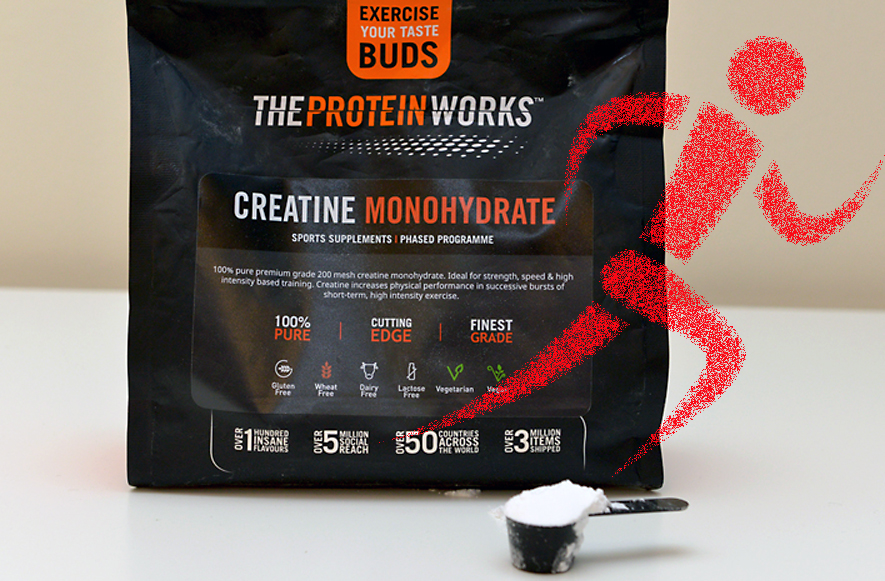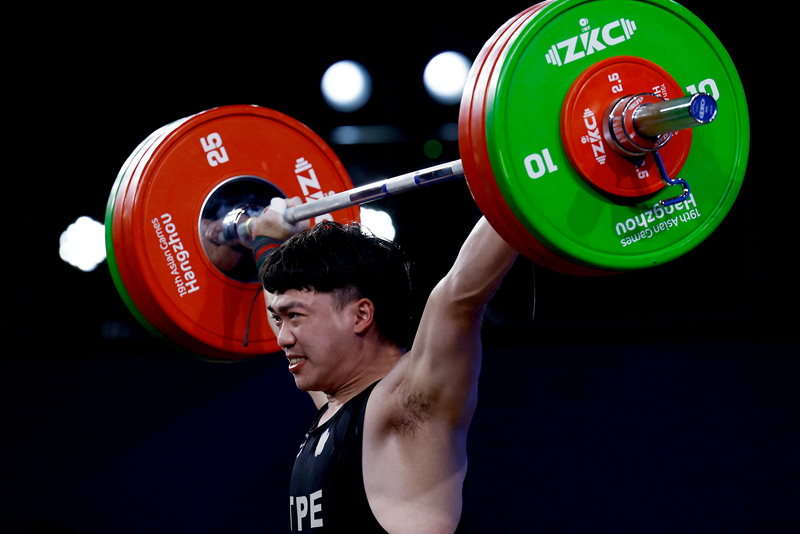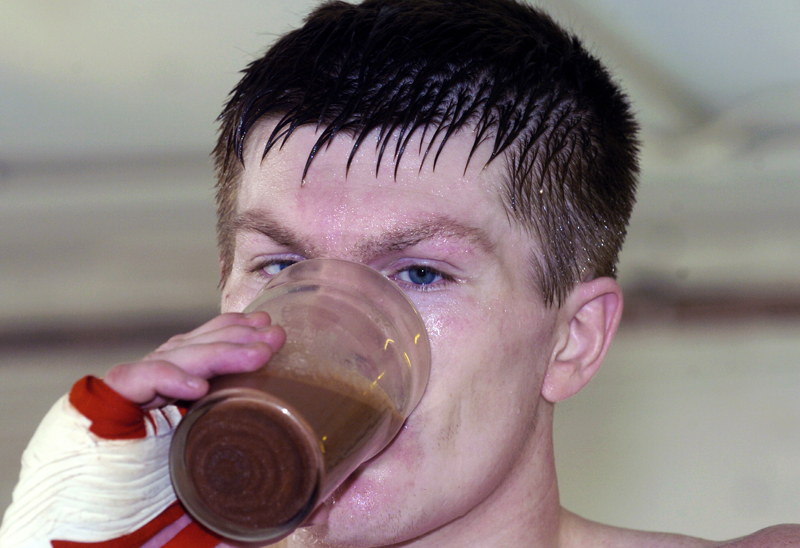You are viewing 1 of your 1 free articles. For unlimited access take a risk-free trial
L-Citrulline: what can the watermelon nutrient do for you?
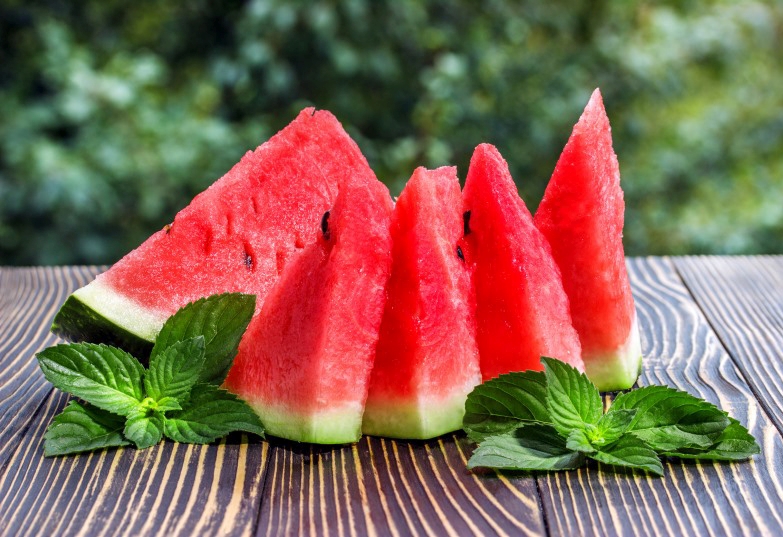
Although the use of amino acids in sports nutrition is quite commonplace, few athletes will be familiar with L-citrulline. With that in mind, Andrew Hamilton looks at some recent research demonstrating that this little known nutrient may have real potential to enhance your sport performance...
L-citrulline (referred from here on in simply as ‘citrulline’) is an amino acid, which you may be familiar with as protein building blocks. Unlike many amino acids however, citrulline is not used to build structural proteins in the body. It’s also a ‘non-essential’ amino acid, which means that when conditions are right, the body can make it from other compounds. How non-essential doesn’t mean non-important, as we’ll see shortly. Citrulline is found naturally in some foods and one of the very best sources is watermelon. Indeed, the name ‘citrulline’ is actually derived from from citrullus, the Latin word for watermelon!
A key role of citrulline is to help the body (via a process known as the ‘urea cycle’) excrete a toxic by-product of metabolism called ammonia. Citrulline can also be readily converted in the body to another amino acid called arginine. That’s important because arginine can readily be used to make a key signalling molecule called nitric oxide, which has the ability to increase blood flow through muscles, providing potential benefits during exercise (see figure 1). Indeed the use of nitrate supplements such as beetroot juice to enhance exercise performance works by using this exact same principle(1-5). Add in the fact that any accumulation of ammonia in exercising muscles can impair exercise performance(6), and it’s easy to understand why there’s a growing interest in citrulline as a performance-enhancing supplement.
Figure 1: A simplified diagram showing the potential connection between citrulline, nitric oxide and increased blood flow through exercising muscles
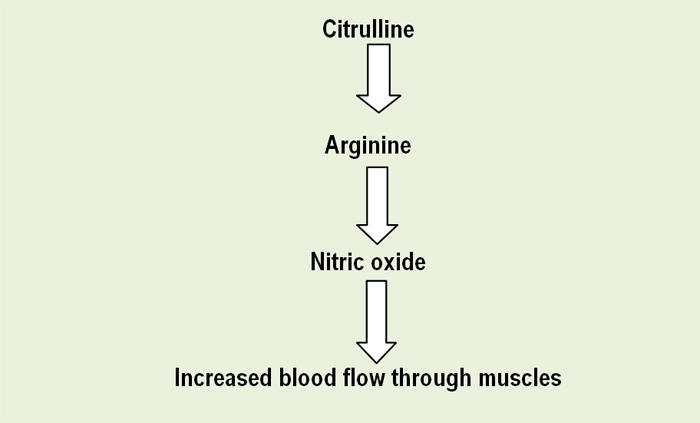
Why citrulline, and not arginine?
Looking at figure 1, an obvious question to ask is this: If arginine can be readily converted to nitric oxide, why not just consume extra arginine instead of citrulline? The answer is to do with the way arginine is (or actually isn’t) absorbed. When you consume arginine – either in food or in supplemental form – that arginine is readily absorbed from the intestines into the bloodstream. The problem arises however when the blood passes through the liver because much of the arginine in the blood is broken down by an enzyme in the body called ‘arginase’. This is a normal and natural process as part of the urea cycle, in which the body rids itself of protein breakdown products. However, when you’re trying to boost nitric oxide production in the body, this liver barrier is something of a problem.Taking citrulline orally however bypasses this barrier; ingested citrulline passes through the liver unaffected, meaning it can be transported in tissues all over the body and then converted to arginine (resulting in increased nitric oxide production) wherever needed. Indeed, taking citrulline is more effective at raising tissue arginine that taking arginine itself(7)! It also explains why the evidence for citrulline supplementation is far more convincing in terms of boosting nitric oxide than many of the so-called ‘nitric oxide booster’ supplements, which have tended to be based on arginine products.
Performance evidence for citrulline
The early research into citrulline was actually much more focussed on its role in health and disease. In the early 2000s, studies had begun to show that citrulline supplementation was effective at reducing blood pressure in animal models and in human patients suffering from certain medical conditions. Another finding was that citrulline was particularly useful for patients with elevated ammonia concentrations, impaired arginine metabolism or those suffering from physical trauma – eg post surgery(8-11).Fast forward a few years and the ability of citrulline to raise nitric oxide levels in the body attracted the attention of sports scientists. Sports supplements claiming to boost performing by raising levels of nitric oxide in the body are nothing new. In the past however, many such products were shown to be ineffective both at raising nitric oxide levels or boosting performance(12,13) – most likely due to the fact they focussed on arginine as the key ingredient (see box 1). The current weight of evidence in favour of citrulline use however is a good deal stronger.
Although there had previously been quite a few animal studies into citrulline, one of the earliest positive studies into citrulline supplementation to enhance performance in humans looked at the effects of a single dose of citrulline before high-intensity resistance exercise(14). The study used a randomised, double-blind, crossover design (the most rigorous kind) with a relatively large number of subjects, making its results significant. In the study, 41 men performed two consecutive chest training protocols using barbell bench press, each consisting of 8 sets (16 sets in all). In one training session, the subjects took 8g of citrulline malate before commencing training while in the other, they took an inert placebo. For each subject, the resistance was set at 80% of their predetermined 1 repetition maximum (1RM) – ie the maximum amount of weight they could live for just one rep.
The results were pretty convincing; in sets 3-8, the number of reps the subjects could perform was significantly greater when they had taken citrulline beforehand and the improvement was greater as the number of sets performed increased. Overall, taking citrulline resulted in nearly 53% more reps completed compared to a placebo. Another benefit was that during the 48 hours following the bench pressing exercise, the subjects reported a significant decrease in muscle soreness of up to 40%.
Later that year, another study looked at the effects of giving 6g of citrulline malate two hours before a 137km cycling stage. This study however did not look at performance per se, but was instead designed to investigate metabolic changes in the cyclists’ muscles immediately after exercise and in the 3-hour recovery period that followed(15). In particular, the researchers wanted to know if giving citrulline could aid recovery or affect other aspects of metabolism.
The results showed that compared to a placebo, when the cyclists took the citrulline, they experienced a greater rise in growth hormone after the ride (a good thing since growth hormone helps stimulate post-exercise muscle recovery and growth). The citrulline also seemed to enhance the cyclists’ muscles ability to use ‘branched chain amino acids’ (BCAAs) as fuel during exercise. This is significant because we know that BCAAs are a valuable source of energy during prolonged and vigorous exercise and we also know that a greater availability of BCAAs during exercise may help to reduce muscle damage and soreness following that exercise(16).
Of mice and men!
When it comes to human performance, it’s risky to draw firm conclusions from animal studies. Nevertheless, when combined with findings from human studies, a 2011 study on mice provides compelling evidence that citrulline really might have something going for it(17). In the study, Japanese researchers examined the effect of citrulline supplementation on the fatigue and performance of mice that swam to exhaustion while carrying a weight on their tail equivalent to 5% of their own bodyweight. The mice were split into two groups; one was given supplemental citrulline for 7 days (250mgs per kilo of bodyweight) while the other served as a control group. All the mice performed three 10-minute swimming sessions on days 1, 3 and 5 during the week’s supplementation period. On day 7, the mice swam until exhaustion and the time till exhaustion was measured.As shown in figure 2, the mice that had been given citrulline managed an average swimming time of 25 minutes. This compared to just 15 minutes with the control mice! What was also interesting was that the citrulline also seemed to lower levels of blood ammonia during exercise and it also helped to suppress the rise in exercise-induced blood lactate, which causes muscle fatigue and (eventually) forces the muscle to stop (see figure 3). The researchers were unequivocal in their conclusions commenting: “Our findings suggest that citrulline supplementation may be useful for improving the exercise performance of athletes.”
Figure 2: Swimming times to exhaustion
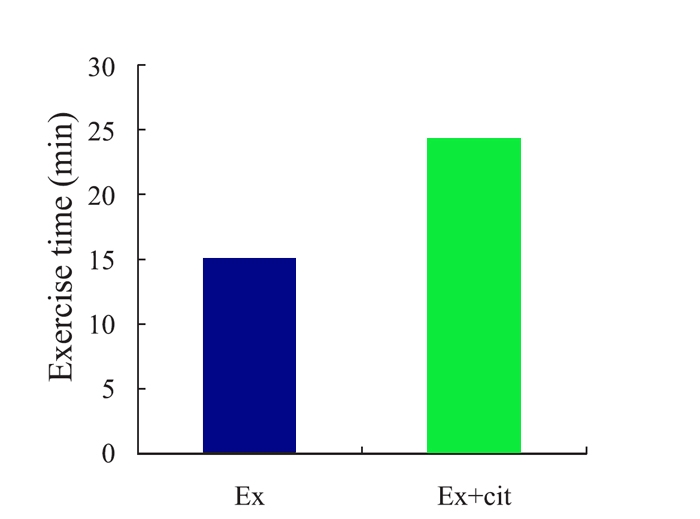
Blue = control mice; green = citrulline-supplemented mice
Figure 3: Lactate before and after swimming to exhaustion
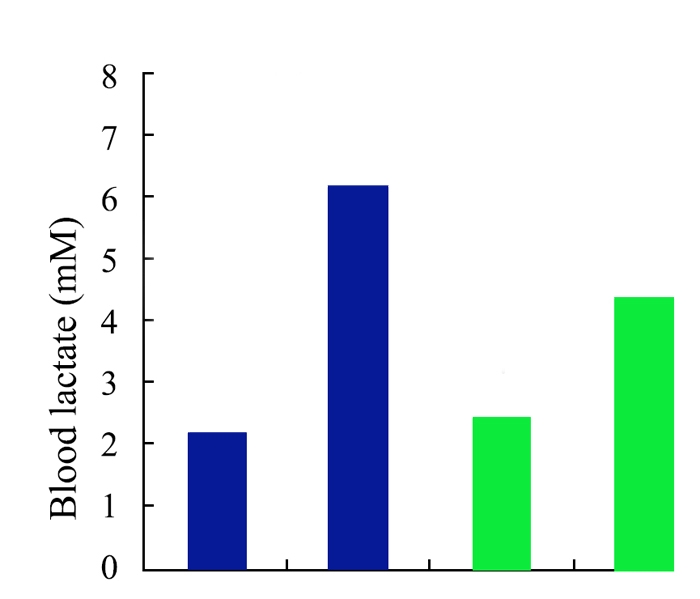
Blue = control mice; green = citrulline-supplemented mice; left hand bar in each colour = before swim; right hand bar = after swim. Notice the much smaller lactate rise in the citrulline-supplemented (green bar) mice
The latest research
Coming right up to date, the evidence in favour of citrulline as an ergogenic nutrient continues to look positive. A study published just a couple of years investigated the effects of citrulline malate supplementation on exercise performance, blood lactate, heart rate and blood pressure during lower-body dynamic resistance exercise(18). Twelve advanced resistance trained male subjects took part in a randomized, counterbalanced, double blind study (scientifically rigorous) and were randomly assigned to take either an inert placebo or citrulline 8g of prior to exercise. The resistance training consisted of five sequential sets (at a weight equivalent to 60% of 1RM) performed to failure on the leg press, hack squat, and leg extension machines. Before and after the resistance exercise, the subjects were assessed for levels of blood lactate, heart rates, and systolic/diastolic blood pressure.Unsurprisingly perhaps, as the sets progressed, both groups struggled to maintain the number of reps they could achieve. However, while there were no differences in lactate, heart rates and blood pressure reading between the groups, the subjects in the citrulline-supplemented group performed significantly higher numbers of repetitions during all three exercises, with the researchers concluding that ‘citrulline supplementation may be beneficial in improving exercise performance during multiple-bout resistance exercise’. Another citrulline study published earlier this year suggests that it might be a particularly useful supplement for athletes who suffer gut problems exercise (see box 3).
Caveats
To date, the evidence in favour of citrulline is certainly positive. As with any new area of research, caution is required as there are still many unanswered questions about citrulline use. For example, what is the optimum dose and when should it be taken? Is it equally effective in all people or do some individual respond better than others (as is the case with caffeine)? And are there any drawbacks to citrulline supplementation? One study investigated incremental treadmill performance to exhaustion with and without prior citrulline supplementation and found that times to exhaustion were not improved with citrulline; indeed, they were slight worse(19). However, the subjects in this study were untrained and the dose given (3g, three hours prior to exercise) were quite a bit lower than those used in other studies. Moreover, since that (2006) study, no other studies have produced negative results for citrulline supplementation. That said, more studies on citrulline will be needed before we can fully understand how to get the best from it.Citrulline - an unexpected benefit
Although much of the research on citrulline has centred on enhancing actual exercise performance, a recent and fascinating study suggests that citrulline could come to the rescue of those who suffer with sensitive tummies during sport. (20)Splanchnic hypoperfusion (SH) is a condition where the normal patterns of blood flow to the intestines and organs in the abdominal region are disturbed for example during vigorous exercise, when blood is directed away from the abdominal region to supply the working muscles with more blood (and oxygen). When SH occurs, the result is micro-trauma/injury to the small intestine, which then causes the gut to become ‘leaky’. This in turn results in a range of gastrointestinal symptoms such as cramps and nausea, which can severely dent athletic performance. The good news is that recent research suggests citrulline can help preserve blood flow to the small intestine, which could help reduce the incidence of SH in athletes.
In a randomised, double-blinded crossover study (the most scientifically rigorous of the lot), 10 men cycled for 60 minutes on two separate occasions at 70% of their maximum workload (moderately hard) after taking 10 grams of L-citrulline (10 g) or an inert placebo. During both trials, the blood flow to the gut was assessed and the levels of amino acids circulating in the bloodstream were measured every ten minutes. The researchers also used a technique known as ‘sugar probing’ to monitor the changes in gut permeability and levels of intestinal damage.
When the subjects took the citrulline, the blood flow to the gut was unaltered during exercise (ie SH was prevented) and there was no indication of increased damage to the intestine. When they took the placebo however, the phenomenon of SH was observed in the subjects and this was also accompanied by increased markers of intestinal damage. How did the citrulline exert its protective effect? The most likely explanation is that when converted to arginine in gut region, the production of nitric oxide was increased, and since nitric oxide increases blood flow in small blood vessels, this helped to offset any tendency towards SH.
Summary
Citrulline is a relatively unknown, non-essential amino acid, but recent evidence from both animal and human studies suggests that it may be able to enhance exercise performance – in particular, high-intensity anaerobic work such as resistance training. There’s also evidence that by increasing blood flow in the intestine, citrulline may help prevent cramps and nausea in those athletes who are prone to gut problems during intense exercise. Despite the recent positive findings however, it’s important to recognise that research into citrulline for exercise performance is still in its infancy and there remains a lot to learn!Practical recommendations
- The evidence to date suggests that taking 8g of citrulline a couple of hours or so before resistance training or other high-intensity exercise could enhance performance. This is probably a good starting point to experiment;
- The evidence that citrulline can enhance performance during more moderate intensity training is weaker and therefore supplementation less recommended;
- The cheapest way to take citrulline is as a pure powder dissolved in water – capsules of citrulline tend to be very expensive;
- Citrulline is a generally safe supplement - however, you should NOT take citrulline if you’re pregnant, breast feeding, taking any drug for erectile dysfunction such as Viagra or you use nitrate supplementation products such as beetroot juice before exercise.
References
1. Arch Pharm Res. 2009 Aug; 32(8):1119-26
2. Acta Physiol (Oxf). 2007; 191(1):59-66
3. Bryan N and Hord N (2010). “Dietary Nitrates and nitrites: in: Food Nutrition and the Nitric Oxide pathway” Destech Pub Inc: Lancaster, PA, pp 59-77
4. J Appl Physiol. 2009 Oct;107(4):1144-55
5. Med Sci Sports Exerc. 2011 Jun;43(6):1125-31
6. Med Sci Sports Exerc. 1997 Jan;29(1):45-57
7. Amino Acids. 2005 Nov;29(3):177-205
8. Am J Physiol Endocrinol Metab. 2008;295:E1315–22
9. Amino Acids. 2009;37:65–78
10. Annu Rev Nutr. 2002;22:61–86
11. JPEN J Parenter Enteral Nutr. 2008;32:377–83
12. Circulation. 2007 Jul 10;116(2):188-95
13. Int J Sports Med. 2005 Jun;26(5):344-9
14. J Strength Cond Res. 2010 May;24(5):1215-22
15. Eur J Appl Physiol. 2010 Sep;110(2):341-51
16 J Int Soc Sports Nutr. 2012 Jul 12;9:20
17. J Nutr Sci Vitaminology Vol. 57 (2011) No. 3 P 246-250
18. J Strength Cond Res. 2014 Sep 15. [Epub ahead of print]
19. Med Sci Sports Exerc. 2006 Apr;38(4):660-6
20. Med Sci Sports Exerc. 2014 Mar 11. [Epub ahead of print]
Newsletter Sign Up
Testimonials
Dr. Alexandra Fandetti-Robin, Back & Body Chiropractic
Elspeth Cowell MSCh DpodM SRCh HCPC reg
William Hunter, Nuffield Health
Further reading
Newsletter Sign Up
Coaches Testimonials
Dr. Alexandra Fandetti-Robin, Back & Body Chiropractic
Elspeth Cowell MSCh DpodM SRCh HCPC reg
William Hunter, Nuffield Health
Keep up with latest sports science research and apply it to maximize performance
Today you have the chance to join a group of athletes, and sports coaches/trainers who all have something special in common...
They use the latest research to improve performance for themselves and their clients - both athletes and sports teams - with help from global specialists in the fields of sports science, sports medicine and sports psychology.
They do this by reading Sports Performance Bulletin, an easy-to-digest but serious-minded journal dedicated to high performance sports. SPB offers a wealth of information and insight into the latest research, in an easily-accessible and understood format, along with a wealth of practical recommendations.
*includes 3 coaching manuals
Get Inspired
All the latest techniques and approaches
Sports Performance Bulletin helps dedicated endurance athletes improve their performance. Sense-checking the latest sports science research, and sourcing evidence and case studies to support findings, Sports Performance Bulletin turns proven insights into easily digestible practical advice. Supporting athletes, coaches and professionals who wish to ensure their guidance and programmes are kept right up to date and based on credible science.





